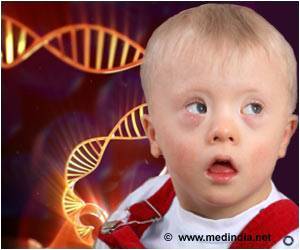Researchers at the University of California, San Diego School of Medicine, the Gladstone Institutes in San Francisco and colleagues report a game-changing advance in stem cell science

"It''s a big step forward," said Kang Zhang, MD, PhD, professor of ophthalmology and human genetics at Shiley Eye Center and director of the Institute for Genomic Medicine, both at UC San Diego. "It means we can generate stable, renewable neural stem cells or downstream products quickly, in great quantities and in a clinical grade - millions in less than a week - that can be used for clinical trials and, eventually, for clinical treatments. Until now, that has not been possible."
Human embryonic stem cells hold great promise in regenerative medicine due to their ability to become any kind of cell needed to repair and restore damaged tissues. But the potential of hESCs has been constrained by a number of practical problems, not least among them the difficulty of growing sufficient quantities of stable, usable cells and the risk that some of these cells might form tumors.
To produce the neural stem cells, Zhang, with co-senior author Sheng Ding, PhD, a former professor of chemistry at The Scripps Research Institute and now at the Gladstone Institutes, and colleagues added small molecules in a chemically defined culture condition that induces hESCs to become primitive neural precursor cells, but then halts the further differentiation process.
"And because it doesn''t use any gene transfer technologies or exogenous cell products, there''s minimal risk of introducing mutations or outside contamination," Zhang said. Assays of these neural precursor cells found no evidence of tumor formation when introduced into laboratory mice.
By adding other chemicals, the scientists are able to then direct the precursor cells to differentiate into different types of mature neurons, "which means you can explore potential clinical applications for a wide range of neurodegenerative diseases," said Zhang. "You can generate neurons for specific conditions like amyotrophic lateral sclerosis (ALS or Lou Gehrig''s disease), Parkinson''s disease or, in the case of my particular research area, eye-specific neurons that are lost in macular degeneration, retinitis pigmentosa or glaucoma."
The next step, according to Zhang, is to use these stem cells to treat different types of neurodegenerative diseases, such as macular degeneration or glaucoma in animal models.
Co-authors of the study include Wenlin Li, Yu Zhang, Wanguo Wei, Rajesh Ambasudhan, Tongxiang Lin, Janghwan Kim, Department of Chemistry, The Scripps Research Institute; Woong Sun, Xiaolei Wang, UCSD Institute for Genomic Medicine and Shiley Eye Center, Department of Anatomy, Korea University College of Medicine, Seoul, Korea; Peng Xia, Maria Talantova, Stuart A. Lipton, Del E. Webb Center for Neuroscience, Aging and Stem Cell Research, Sanford-Burnham Medical Research Institute; Woon Ryoung Kim, Department of Anatomy, Korea University College of Medicine, Seoul, Korea.
Source-Newswise
 MEDINDIA
MEDINDIA



 Email
Email







